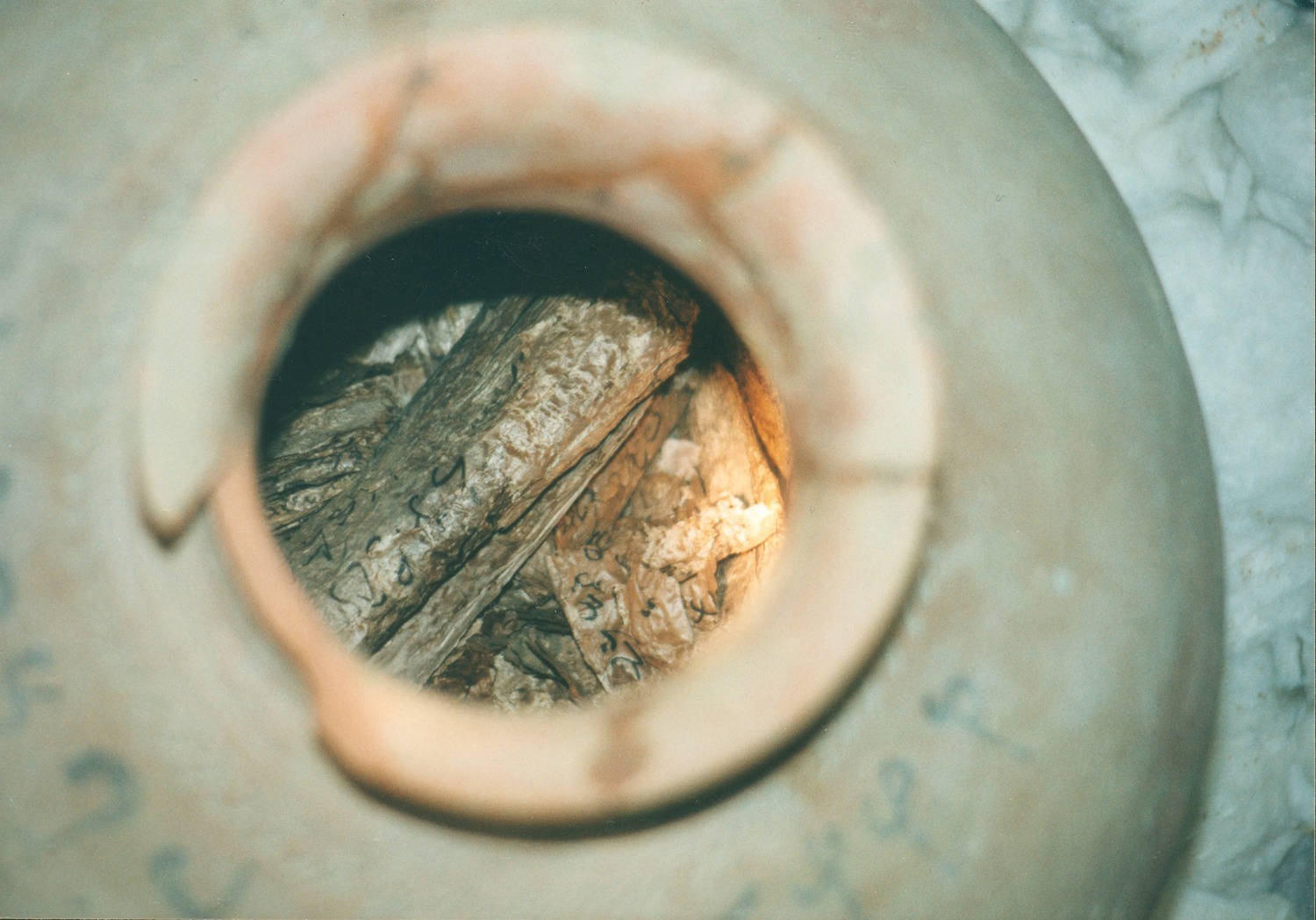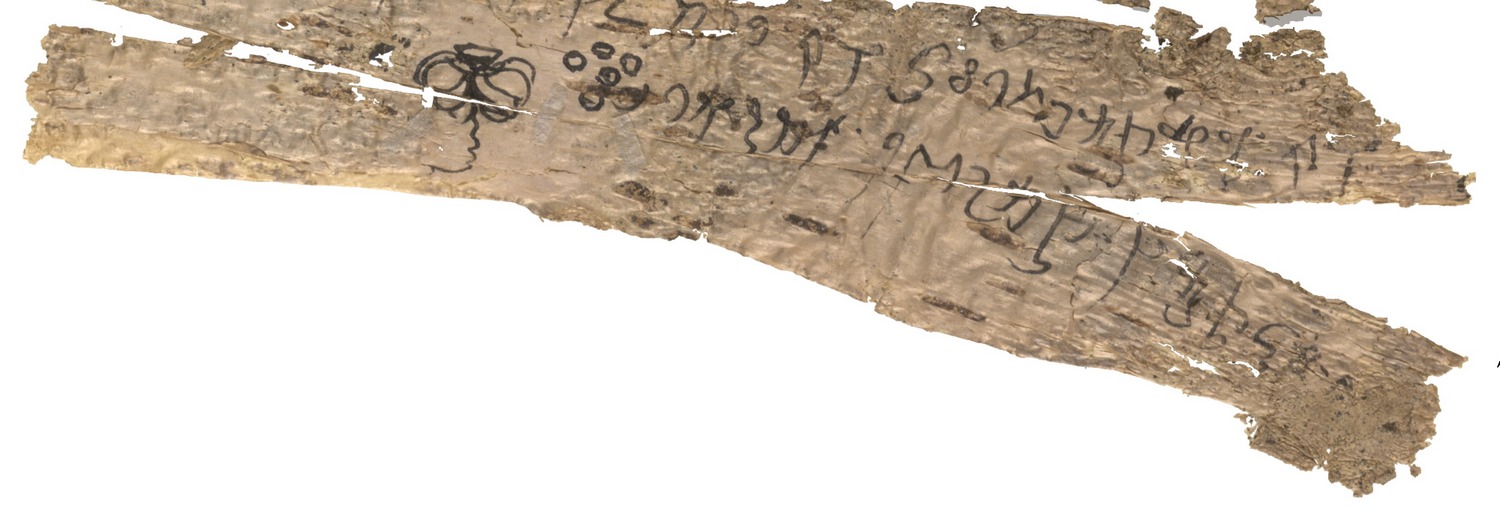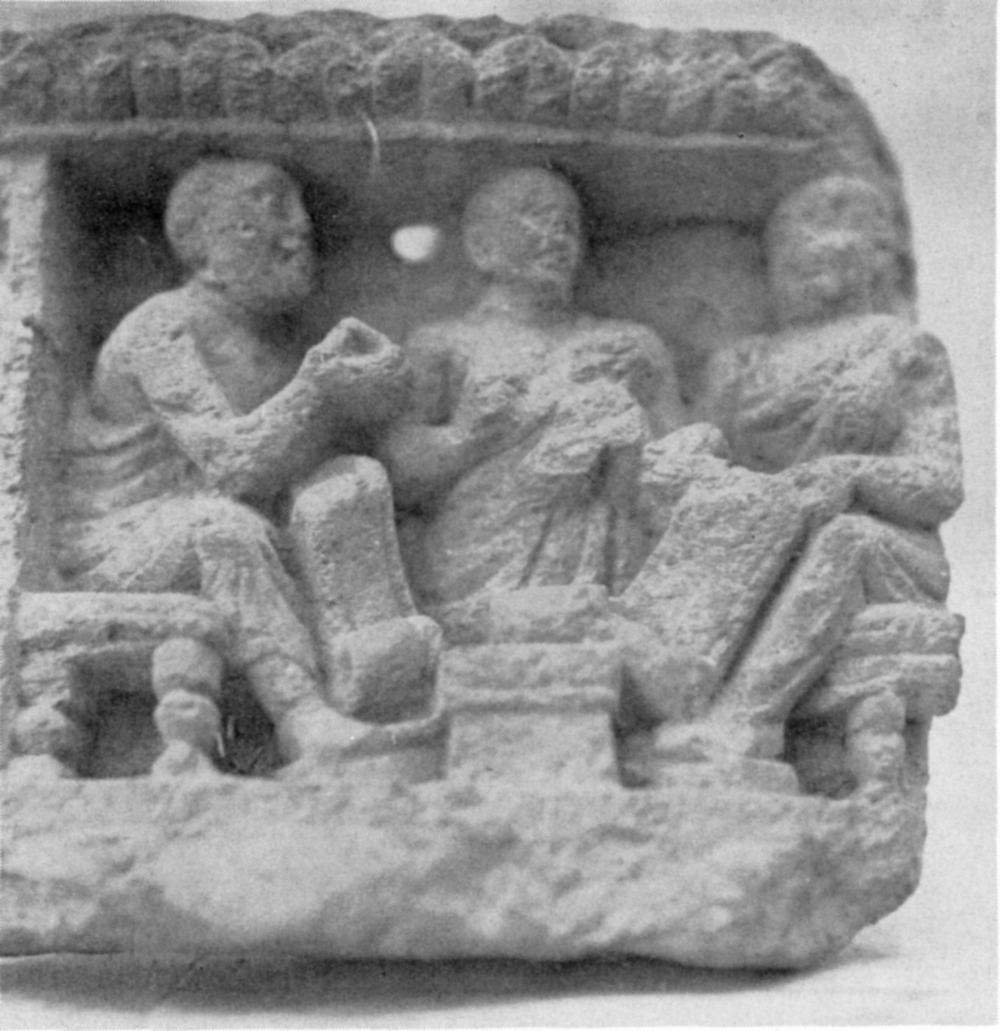No 25
Birch Bark from Gandhāra:
The Discovery of Writing in Buddhist Monasteries
A birch‐bark manuscript from Gandhāra gives insight into the role of writing in ancient Buddhist monasteries and into the development of Buddhism on the way from its birthplace in eastern India to Central Asia and China. The manuscript is from a literate culture that died out in the middle of the first millenium CE, to be replaced by Sanskrit language, Brāhmī script and the palm‐leaf manuscript format. Early Gandhāran literature fell into oblivion until spectacular manuscript finds in the last two decades and painstaking editorial work brought it back into the limelight of scholarship and the general public. What can we learn from this manuscript about the history of Buddhism and the introduction of writing in South Asia in the last centuries BCE and the first centuries CE?
In the ancient region of Gandhāra (modern‐day northern Pakistan and eastern Afghanistan), the Indian and Iranian cultural spheres met, and the expedition of Alexander the Great (326 BCE) contributed Hellenistic influences. The latter are particularly apparent in the visual art of Gandhāra, where Greco‐Roman forms were used to express Buddhist motifs. Equally important, however, was the manuscript culture of Gandhāra that adapted the Aramaic script of Iran to the Middle Indo‐Aryan language Gāndhārī and used birch bark to commit Indian literature to writing for the first time. The newly developed script of Gandhāra is called Kharoṣṭhī by modern scholarship (and may already have been known under this name in antiquity).

Our scroll was discovered in the 1990s as part of a collection of 28 Buddhist manuscripts that were buried in a clay pot in the first century CE – probably out of respect for the sanctity of their contents – and in this way survived the millenia (fig. 1). Unfortunately, the precise findspot of the collection and its fate before it reached the British Library in 1994 remain unknown. Conservators at the library carefully unrolled the fragile scrolls and mounted them between protective glass plates. Their decipherment and study are primarily based on photographs in natural lighting and the infrared spectrum, but the investigation of particularly thorny passages still requires consultation of the original manuscript.

Our manuscript consists of five individual birch‐bark sheets, each measuring ca. 14 × 24 cm, that have been glued together vertically to form a scroll of 119 cm in preserved length (fig. 2). For additional reinforcement, the sheets were stitched together in the left and right margins, and in some places the thread is still preserved. The scribe filled the entire recto of the scroll in a cursive hand, and when he reached its lower end, he flipped the scroll vertically and continued to write on the verso in opposite orientation. Every ten or fifteen lines, the flow of the text is interrupted by large punctuation marks in the shape of stylized lotus flowers, and the scribe additionally noted these section breaks by rectangular marks in the right margin of the manuscript. There is no word spacing, and phrasal units are only sporadically set off by punctuation dots (fig. 3).

Decipherment of the manuscript revealed a previously unknown commentary on early Buddhist verses, many of which occur in different linguistic form in Southeast Asian Theravāda Buddhist texts (Dhammapada, Udāna, Suttanipāta) and in Chinese translation (Faju jing, Chuyao jing, Yizu jing). The exegetical techniques of the commentary likewise have historical connections in the early Southeast Asian and Chinese traditions, and our text thus revealed itself to be a missing link in the history of Buddhist textual transmission and hermeneutics. Further investigation of the British Library collection brought to light an additional two scrolls that contained other parts of the same text, which was evidently either planned as a multi‐volume composition or elaborated into one. At the lower edge of the last scroll (fig. 4), a lifelike sketch of a lotus flower serves as a vignette marking the end of the text. A cut running through the flower was carefully repaired with small glued‐on birch‐bark strips.

The scribe of the scroll may also have been the author of the commentary. There are no indications of a written exemplar for the text, but several passages preserve traces of an oral background in the shape of misunderstood words. A contemporary relief from Gandhāra illustrates vividly how manuscripts such as ours were used: Three monks, absorbed in debate, each hold scrolls in their hand, and they appear to be referring to their contents (fig. 5). In line with such a context of use, our manuscript reflects a variety of different interpretations of the same root verse and gives transmissional variants side by side. By referring to particular textual units (the Ekotaria division of the canon and the Parayaṇa collection of verses) it simultaneously shows that the basic structure of the Buddhist canon in the first century CE already agreed with the divisions of modern Buddhist canons (in Theravāda Buddhism the Aṅguttara division and the Pārāyana collection).

At the same time, the manuscript raises numerous questions for further research. One unsolved problem is a fragment in the British Library collection containing information about contents and ownership (“ ... nineteen. In the ... book twenty‐five verses. Of the monk Saṃghaśrava.”). The scribal hand indicates that these lines refer to our manuscript, but both physically and textually it has proved impossible to connect them to one of the three preserved scrolls of the manuscript. Does this mean that originally the commentary had even more volumes? Another puzzle is the selection and order of the verses commented upon which follow neither their arrangement in the known source texts nor any discernible exegetical master plan.
Does the structure of the commentary derive from an aspect of its context of use – for example a liturgical calendar – that remains unknown to us? And what can we deduce from these earliest written sources of Buddhism about the original teaching of the Buddha who lived four hundred years earlier in far‐away eastern India? Research into the literature of ancient Gandhāra is still in its earliest beginnings, but the spectacular discoveries of the last decades have now made available for study almost one hundred long manuscripts with texts from all genres of Buddhist literature. Their decipherment and edition will take several more decades, and we can be sure that they will both solve many existing problems and open up new lines of inquiry.
References
- BAUMS, Stefan (2009): A Gāndhārī Commentary on Early Buddhist Verses: British Library Kharoṣṭhī Fragments 7, 9, 13 and 18. Ph.D. Dissertation. University of Washington.
- BAUMS, Stefan (2013): “Die Schriftkultur Gandhāras.” In: Akademie Aktuell: Zeitschrift der Bayerischen Akademie der Wissenschaften, 44, 20–23.
- BAUMS, Stefan / GLASS, Andrew (2002 ff.): “Catalog of Gāndhārī Texts”.
- SALOMON, Richard (1999): Ancient Buddhist Scrolls from Gandhāra: The British Library Kharoṣṭhī Fragments. Seattle: University of Washington Press.
- TADDEI, Maurizio (1983): “Addenda to The Story of the Buddha and the Skull‐Tapper (AION, 39, 1979, 3).” In: Annali dell’Istituto Universitario Orientale, 43, 333–339.
Description
British Library
Shelfmark: Or. 14195.17,19–21,26–27,35
Material: Birch bark, three scrolls, 413 lines
Dimensions: 14 cm wide; 118.6, 70.3 and 22.8 cm long
Provenance: 1st century CE, Gandhāra (northern Pakistan or eastern Afghanistan)
Text by Stefan Baums
© for fig. 1: The British Library Board fig. 2-4: The British Library Board and Stefan Baums.
